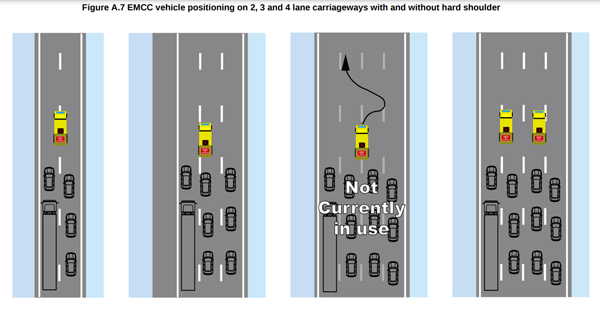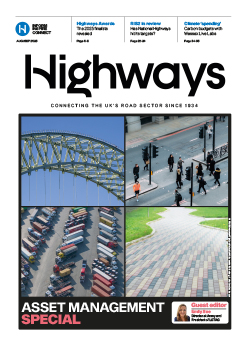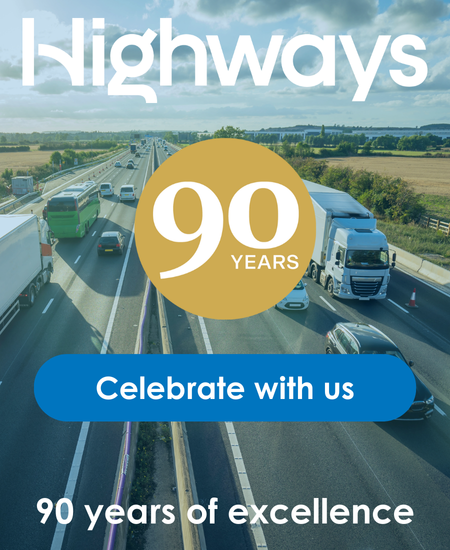A longstanding 'dream' of providing workers on fast roads with a 'safe and sterile' work environment has been realised through a new Design Manual for Roads and Bridges (DMRB) standard.
Released this year, Appendix A of the DMRB document GG 117 - The design and implementation of temporary traffic management and road works outlines the technical details behind the 'enhanced mobile carriageway closure (EMCC)'.
The system uses a convoy vehicle, which enters traffic and slows down to create a moving lateral road 'closure' without closing the road. It is suitable for dual carriageways and motorways with up to four lanes.
The highway maintenance convoy vehicle or vehicles is equipped with an incursion detection system involving CCTV cameras that capture footage from two minutes before to two minutes after the incident.
It has been trialled since 2022 and the National Highways National Safety Control Review (NSCRG) has agreed that this is now an accepted industry technique.

The guidance states: 'A traffic free zone is created by one or more EMCC vehicles which manoeuvre within normal free flow traffic conditions, initially showing rear signing to 'HIGHWAY MAINTENANCE' with chevrons and rear beacons on.
'The EMCC vehicle will then change to show rear signing formed of an upper panel of the red "X" and a lower panel of the sign to "CONVOY VEHICLE NO OVERTAKING with rear beacons off to create a lateral closure across the carriageway. The speed of the EMCC vehicle is then gradually and steadily reduced from the 85th percentile speed of private cars and light vehicles to around 10 mph.
'It is this slowing of traffic at a controlled rate which creates a traffic free zone downstream between the EMCC vehicle(s) and the traffic moving away at normal speed in front of the EMCC vehicle, creating time for the works operation to be undertaken.'
Kieth Smith, chief engineer at Chevron, created the concept which is now open to all contractors under the DMRB guidance, following trials with National Highways across four regions.
Speaking at the Road Safety Markings Association (RSMA) annual conference he told delegates: 'We could not go on sustainably in the way we were. For a high-risk operation, our operatives used to have 600 vehicles at a time going past them. In traffic management, we still do things as if it's the 1990s. We still wait for a gap in traffic, but those gaps don’t occur. We have to face up and we have to modernise.
'When I first thought of [the EMCC concept], I was categorically told that's never going to happen. Everyone's had this dream of creating sterile areas.
'Our mobile carriageway road closure has done 8,600 passes since we developed it and we've only had 14 incursions. Six of them have been cars forcing their way through the queue of traffic.
'We now have, in a standard, guidance that allows us to create sterile areas to allow people to work safely. It cuts the take-home operation down from 25 minutes to five minutes or less, depending on what we're doing. It allows us to create a sterile area. We don't have to shut roads. We thought bigger.'
The guidance highlights that temporary traffic-free zones have traditionally been created by requesting police or traffic officer support to implement a rolling roadblock.
EMCC means 'requests for police or traffic officers to support planned work activities should begin to be limited to unplanned incidents'.
The technique can be used for the installation, maintenance, switching or removal of any temporary traffic management layout and pre-setting of equipment.
'It can also be used to support the maintenance of a traffic management system such as when live lane working is required for crossing a carriageway to maintain traffic management equipment, managing displaced traffic management equipment and retrieving debris, all of which are expected activities occurring as part of planned works.'





